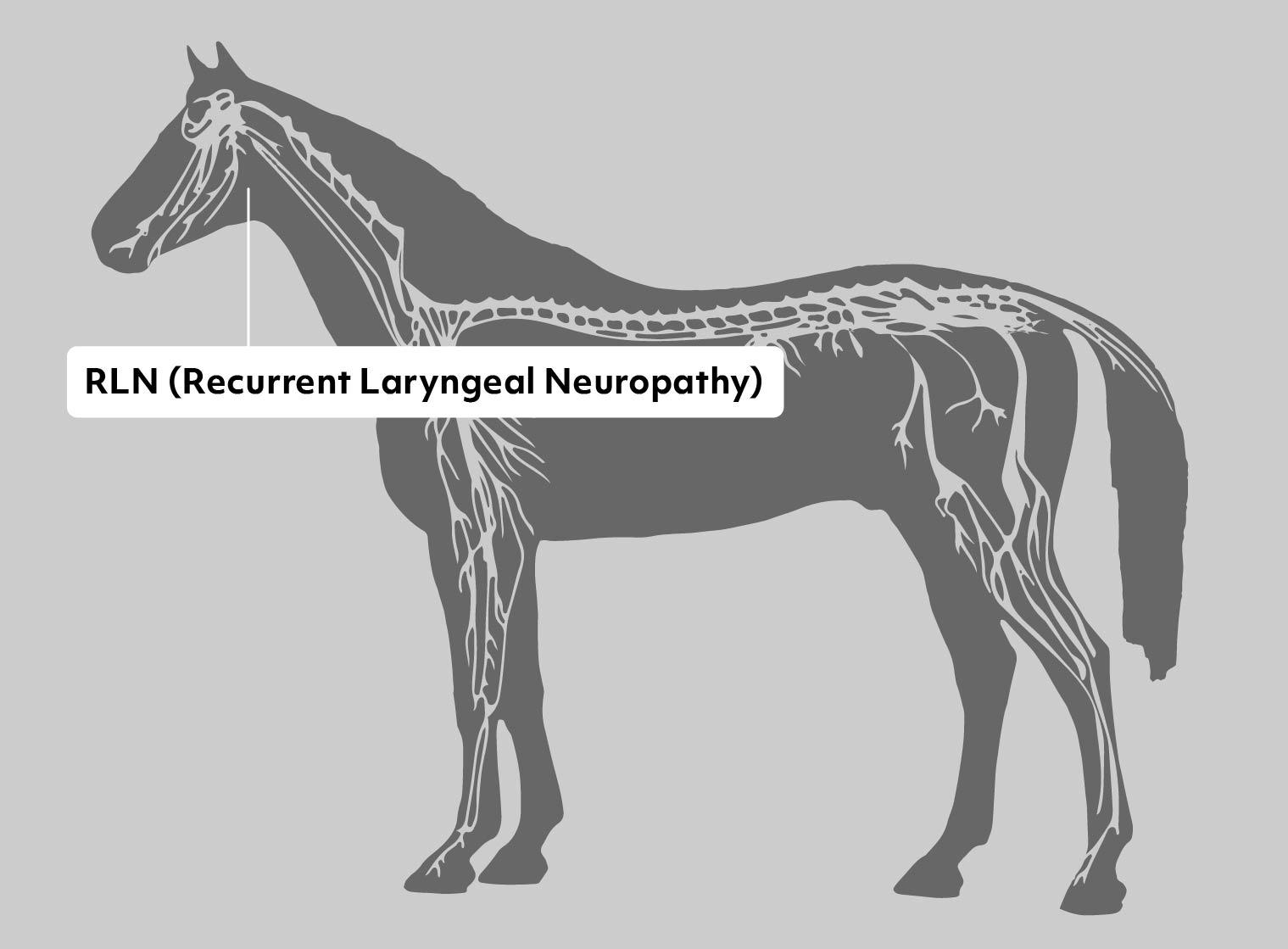Recurrent Laryngeal Neuropathy (RLN)
Gene or Region: ECA3
Reference Variant: T
Mutant Variant: C
Affected Breeds: Many
Research Confidence: High - Strong correlation in larger studies
Explanation of Results: RLN/RLN = homozygous for Recurrent Laryngeal Neuropathy Risk, ~12x higher risk than n/n RLN/n = heterozygous for Recurrent Laryngeal Neuropathy Risk, ~5x higher risk than n/n n/n = no variant detected
General Information for Recurrent Laryngeal Neuropathy
Recurrent Laryngeal Neuropathy (RLN) commonly called "Roaring" is a disease that results in loss of the neurons that open the larynx. Although we do not know what causes RLN, it significantly affects performance in Thoroughbreds and other sport horses. In technical terms, RLN represents a distal axonopathy of the recurrent laryngeal nerves, which is tpically expressed only on the left side of the larynx (the left nerve is the longest nerve in horses). RLN is also a mononeuropathy, as other peripheral nerves of the horse remain unaffected. RLN is an important issue for horses in competitive events, because the resultant paralysis of the larynx leads to obstruction of air flow during intense exercise. This obstruction creates the abnormal inspiratory noise that gives RLN its common name: “roaring.” Horses with RLN cannot breath normally at speed and as a result don't perform to their full potential. RLN has particular economic importance in Thoroughbred racehorses because these animals enter race training as 2-year-olds. Even though many thoroughbred horses sold at auction are endoscopically examined for evidence of RLN, the condition tends to develop with age, and may not yet be clinically evident in young animals.
A genetic contribution to the pathogenesis of RLN was previously suggested by the higher prevalence of the condition in offspring of RLN-affected than unaffected stallions. A 2014 study concluded that geldings are at higher risk than mares or stallions, and noted association to a site in the genome that also contributes to height.
References
Boyko et al., “Genomic analysis establishes correlation between growth and laryngeal neuropathy in Thoroughbreds.” (2014) BMC Genomics. 15:259. PMID: 24707981
Figure 1 from: “Equine Welfare during Exercise: An Evaluation of Breathing, Breathlessness and Bridles”, Mellor and Beausoleil, Animals 2017, 7(6), 41; doi:10.3390/ani7060041
More Horse Health
"Warmblood" Fragile Foal Syndrome
"Warmblood" fragile foal syndrome (FFS) is a connective tissue disorder resulting in joint laxity and extremely thin skin that is only loosely connected to the body. The skin is easily torn, resulting in lacerations, hematomas, and seromas across the foal. Affected foals are euthanized shortly after birth.
Androgen Insensitivity Syndrome
Androgen Insensitivity Syndrome (AIS) is an X-linked disorder of sexual development resulting in a female horse with XY chromosomes. Horses with AIS exhibit stallion-like behavior such as agression toward other horses, Flehman response and vocalization toward cycling mares.
Cerebellar Abiotrophy
Cerebellar Abiotrophy (CA) is a degenerative neurological disorder, due to the death of neurons in the brain. Symptoms (head tremors, lack of coordination, wide stances, exaggerated gain, difficulty rising and startling easily), typically appear in foals between six weeks and four months of age.
Chronic Idiopathic Anhidrosis Risk
Chronic Idiopathic Anhidrosis Risk (CIA) is the inability to sweat in response to increased body temperature, (AKA "non-sweater"). This condition is dangerous and sometimes life-threatening for horses, who rely on sweating for 65-70% of their temperature regulation.
